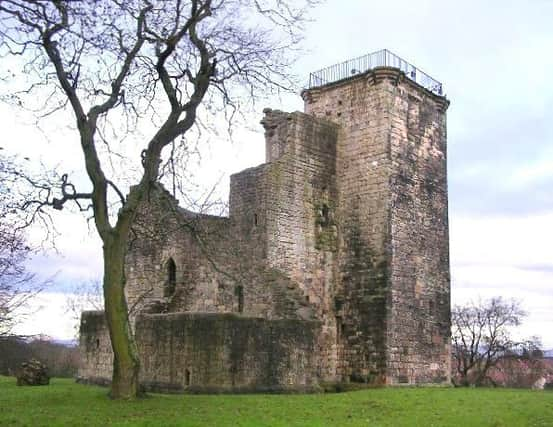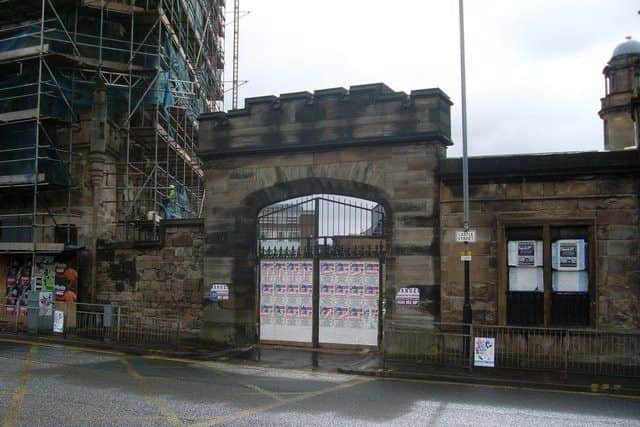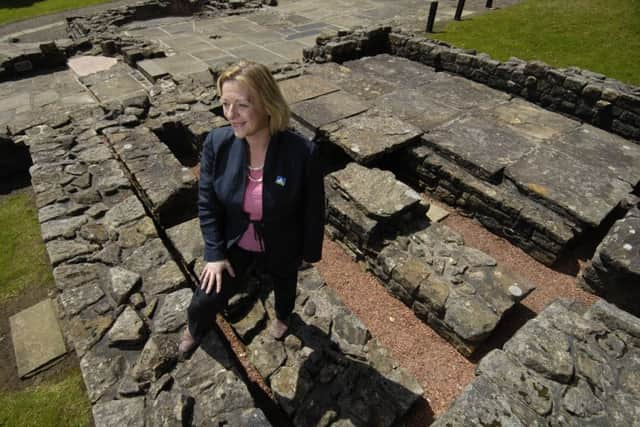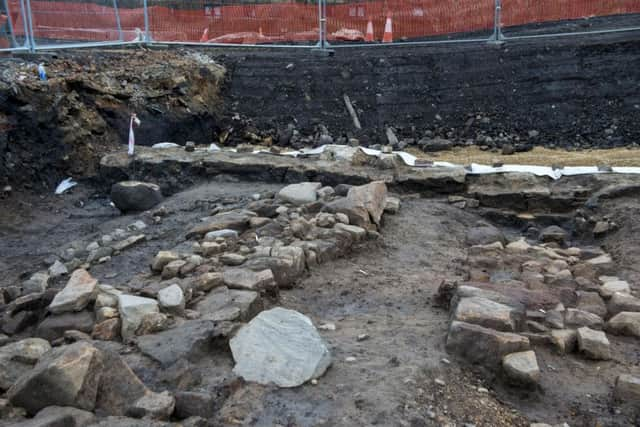A guide to the castles of Glasgow


You don’t really associate Glasgow with castles. There have been fortifications in and around the city but not much physical evidence of them remains.
But the clues are there. There remains a Castle Street in the centre, an Old Castle Road in Cathcart and a Castlebank Street in Partick. These names originate from fortresses that once stood in open countryside - hard to picture in today’s built-up environment.
Advertisement
Hide AdAdvertisement
Hide AdOn the other hand, Castlemilk (also known locally as Chateau Lait of course) has, disappointingly, never housed a castle. The Stuart family who owned the land were from Castle Milk in Dumfriesshire.


Earliest fortifications around Glasgow
People have lived along the Clyde for thousands of years. In 142 AD the Romans camped nearby at the Antonine Wall, which stretched through Bearsden towards the River Forth, and built regular fortifications along it.
Near the village of Twechar are remains of a Roman fort at Bar Hill, and in Bearsden you can explore the remains of a Roman bathhouse.
Only 20 years after building the fortifications the Romans abandoned the Antonine Wall and withdrew to the south again.


Bishop’s Castle
It wasn’t until around the sixth century that Glasgow was established. The settlement became a religious centre after St Mungo founded his church at the Molendinar burn, where the medieval Glasgow Cathedral now stands. The road outside the cathedral is called Castle Street, a reference to the Bishop’s Castle that stood just north-west on the site of the present Glasgow Royal Infirmary.
The first stone-built cathedral in Glasgow dates from 1136 and the bishop’s residence is presumed to date from this time. By the time Edward I of England invaded Scotland the castle was fortified.
In the 15th century a five-storey tower was built by Bishop John Cameron. But during the Reformation the Bishop’s Castle was besieged six times, and the city’s religious leader eventually fled to France.


Advertisement
Hide AdAdvertisement
Hide AdThe tower later housed a jail before falling into disrepair in the 1700s, with much of its stone taken for new buildings in the growing city. There was still enough of the castke standing at the time of the 1715 Jacobite uprising for it to be used to hold 353 prisoners, guarded by 100 troops. The building was finally flattened to make way for the first hospital on the site in 1792, and a castellated gate at the modern Royal Infirmary entrance commemorates the previous structure.
Crookston Castle
Tucked away in a housing estate in the southside of the city stands Glasgow’s last true castle. Crookston sits among trees at the top of a hill in a nondescript park near to where Levern Water joins White Cart Water. The first fortification was built by Sir Robert de Croc, an Anglo-Norman knight, in the 12th century, whom Crookston takes its name from. The deep moat built around the structure still remains.
The Stewarts of Darnley took possession of the estate in the 1300s and by around 1400 its wooden structures had been replaced with a rectangular stone castle, with towers at each of the four corners. When John Stewart took part in a rebellion against James IV in 1489, the Scots king responded by bombarding the castle and destroying two of the towers and much of its central block.


One of the most famous of the Darnley Stewarts, Henry Stuart, later Lord Darnley, was allegedly betrothed to Mary, Queen of Scots beneath an ancient yew tree at Crookston in 1565. When the tree was felled in 1816, a model of the castle was carved from its wood. It is now on display in Pollok House.
The Stewarts abandoned Crookston in the late 16th century and by 1600 it was in ruins. In 1757 the Maxwells of Pollok bought the estate. The castle was partially restored in 1847 for the visit of Queen Victoria to Glasgow. Today, only one of the towers still stands but the now roofless central hall can be explored. A staircase and steep ladder take you to the tower roof, which offers impressive views across the south of Glasgow and beyond. Entry to the castle is free.
Haggs Castle
Many will remember Haggs Castle in Pollokshields as Glasgow’s Museum of Childhood. The tower house on St Andrews Drive is now a private residence after the local authority sold it in 1998, two years after the museum closed.
Haggs was built in 1585 by Sir John Maxwell of Pollok as the powerful Scots family’s main residence. It was named after the bogs, or “haggs”, that once filled the area. After more than two centuries in residence, the Maxwells moved to Pollok House, the 18th century purpose-built mansion now in the care of the National Trust for Scotland.
Advertisement
Hide AdAdvertisement
Hide AdHaggs Castle was later partially restored and in the 1850s became home to the Maxwell’s estate factor.


During World War II the tower was requisitioned by the army and later divided into flats. In 1972 Glasgow Corporation bought it, with the museum opening four years later.
Cathcart Castle
Cathcart Castle was another southside fortress. But unlike Crookston and Haggs, its remains have been flattened. Located in what is now Linn Park, Cathcart was built as a five-storey rectangular keep in the 15th century for the Earls of Cathcart. An earlier fortification on the site, most likely a wooden fort, was home to clan chief Alan de Cathcart on a site overlooking the White Cart Water.
Cathcart at this time was a much larger area than on current maps, covering lands in Renfrewshire and Lanarkshire, down to Langside. Alan de Cathcart was a staunch supporter of William Wallace and Robert the Bruce. With these connections he extended the family lands into Ayrshire.
In 1927 Glasgow Corporation took ownership of the castle ruins. Planned restorations never took place and by the 1950s it was closed off to the public as the site was becoming dangerous. It was finally demolished in 1980, leaving only a couple of feet of walls standing above the ground. It is no longer marked or signposted, on the edge of Linn Park.
Partick Castle
Partick was once a rural village on the banks of the Kelvin, separated from the rest of Glasgow by open fields. It was here that the Bishops of Glasgow built a country retreat in the 12th century, but it is believed the kings of Strathclyde, whose kingdom was centred around Dumbarton Rock, had a lodge on the site as far back as the ninth century. The ancient parish of Govan, a stronghold of the Strathclyde kingdom, lies just across the Clyde from Partick.
The bishops’ castle is depicted in the old Partick Burgh coat of arms, with the burgh finally being merged into the city in 1912.
Advertisement
Hide AdAdvertisement
Hide AdAt the lower end of the Kelvin several mills were established in the medieval period and expanded over the years to supply the growing city of Glasgow.
The Bishops of Glasgow maintained a residence in Partick until the Reformation in 1560, when James Beaton fled to France.
Partick Castle was believed to lie on the west bank of the Kelvin close to where it meets the Clyde, which excavations in 2016 subsequently confirmed.
This second Partick Castle was built in 1611 by the wealthy merchant George Hutcheson. By 1770 this later castle was empty and fifteen years later was in ruins. In the 1830s it was demolished and its stone re-used in local construction.
With Partick rapidly expanding during the Victorian era, the site was cleared in the 1880s and Partick central railway station and goods yard was built over it. When the line closed in the 1960s, a scrap yard occupied the site until the late 20th century.
The site of the two Partick castles is now home to several blocks of student flats and a supermarket. But before construction began in 2015, archaeologists were finally allowed a chance to survey the historic site.
Experts from Guard Archaeology, who were hired by Scottish Water, were able to recover fragments of pottery, metalwork, leather, glass and animal bones, as well as locating the foundations of both castles.
This feature was first published on the Glasgow Punter blog